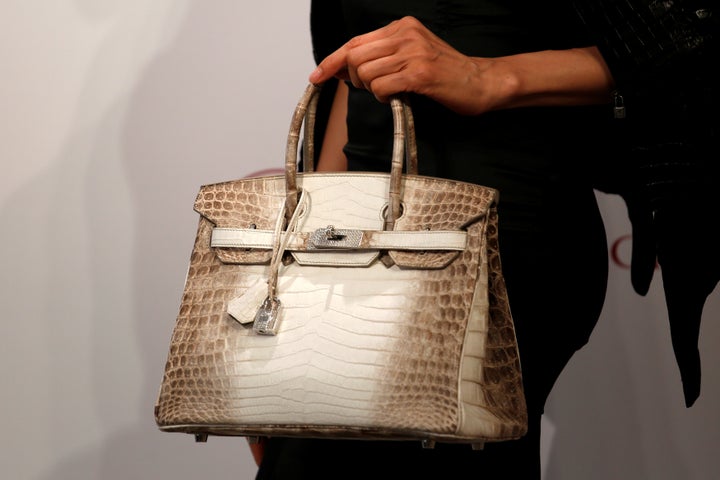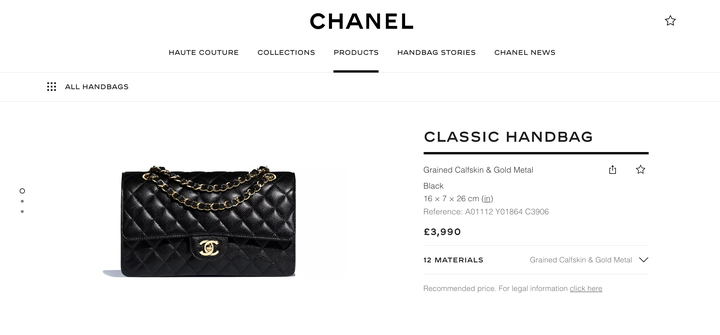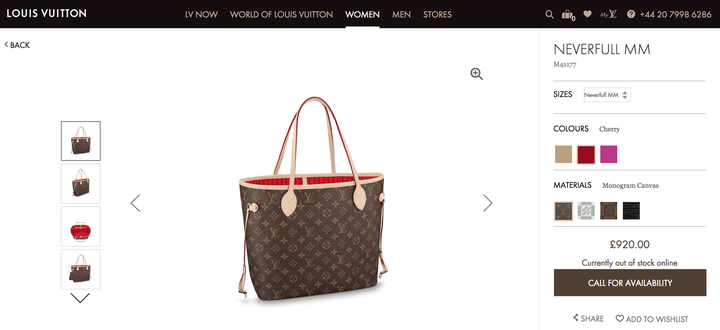For most of us, buying secondhand means the chance to bag ourselves a bargain we couldn’t otherwise afford. But a pre-owned Hermès handbag has just sold for a whopping £162,500 in London, making it the most expensive handbag sold at auction in Europe.
The 10-year-old designer bag, in Himalaya Birkin style, includes an 18-carat white gold diamond encrusted lock and is made from crocodile hide. Auctioneers at Christie’s, where the bag was sold, said it was the “undisputed most valuable bag in the world” and named the style the “most desired bag in existence”.
The latest sale shows a Hermès bag really is the gift that keeps on giving. Another Himalaya Birkin secured the title of the most expensive bag in the world in 2017, when it sold for a humongous £253,700 at an auction in Hong Kong.
But if you don’t have a spare house deposit (or five) lying around, can you still buy a pre-loved designer bag that’ll retain its value?

If you’re looking to buy a secondhand handbag which you may want to sell on again in the future, Chanel, Louis Vuitton and Hermès are the “most secure” brands to invest in, according to Param Rai, from secondhand accessories seller Bagista. However, as Hermès bags can go for “crazy amounts”, it is advisable to look out for the first two.
“It’s not just the brand name that matters,” Rai tells HuffPost UK. ”We tend to say people should look to invest in a classic style of those particular brands.”
For Chanel, Rai recommends buying the ‘Classic Flap Bag’, which is still pricey, costing between £2,000 or £3,000 secondhand. But that is almost 50% less than some retail prices and if you decide to resell, you shouldn’t be short of buyers.

For something slightly more affordable, Rai recommends a Louis Vuitton ‘Neverfall’, saying you can expect to pay around £600 for a good quality secondhand which is about 30-40% off the retail price.

Of course, you can save a few extra pennies if you don’t mind your handbag not being in pristine condition - and let’s be honest, that will save you a lot of worry - who can really be bothered to give a bag its own chair in a pub anyway?
“The more used the item is, the more you will be able to save,” says Virginia Feacey, from online designer marketplace Rebelle. “If it’s current season or very recent, expect to pay close to retail price for high value brands. You should also take into account if the item is a rare special edition or collector’s piece, then you might have to pay more than original retail price. Always do a bit of research to see what the current market value is.”
Unfortunately inadvertently buying a counterfeit bag can mean your purchase is no longer an investment. Feacey says it takes a “well trained eye” to recognise a good fake, but there are a few things you can do to identify any obvious errors.
“Always check the overall feel of the bag: its weight and sturdiness. Then check the stitching for irregularities, the zips for any flimsiness,” she says. “Check if the brand’s logo is in the right place, in the right font, with high quality stitching (if it’s stitched). Also check the metal hardware: is the brand’s logo in the right place, with the right font. Is the engraving clear or shallow?”
Finally, Feacey recommends smelling the bag, which can be an instant giveaway if it’s not made from the material it should be. “Never trust authentication via photos, you have to handle the bag to be 100% sure,” she says.
Checking that the bag comes with accessories such as a dust bag, authenticity cards and receipts can also help, but isn’t foolproof. “The motto we go by is that if you can fake a bag and make a bag look almost 100%, then it’s very, very easy to fake a receipt and a little card,” Rai says.
Overall, your safest bet may be to go to a recognised bag seller, rather than splashing the cash via eBay or Facebook groups.
“We offer a 100% guarantee with anything we sell and that’s born out of the fact we’re insured for every single bag that we sell,” Rai explains.
“We work with an artificial intelligence company to authenticate our bags, who take microscopic images of the bags and the software compares those to millions of other microscopic images of fake bags and real bags. Basically it works like fingerprint technology, so it might deem it to be very similar to another counterfeit item, or it might say this possesses identical images to items they have found to be authentic.”
Let’s face it, if you’re going to pay anything from £600 to £162,500 for a designer bag, you’d want it to be real.
